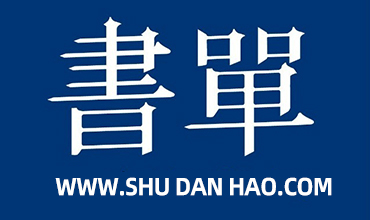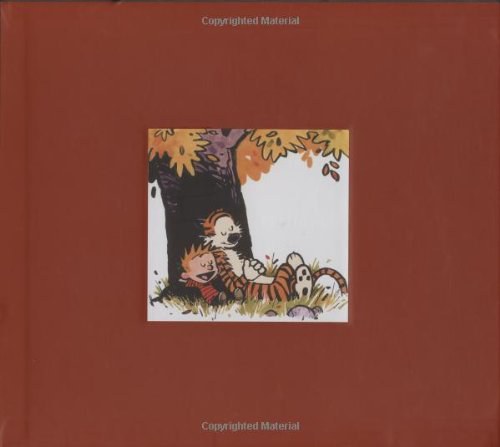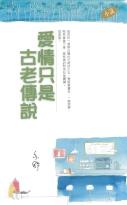
Peter C·Perdue《China Marches West》
书刊介绍
内容简介
From about 1600 to 1800, the Qing empire of China expanded to unprecedented size. Through astute diplomacy, economic investment, and a series of ambitious military campaigns into the heart of Central Eurasia, the Manchu rulers defeated the Zunghar Mongols, and brought all of modern Xinjiang and Mongolia under their control, while gaining dominant influence in Tibet. The China we know is a product of these vast conquests.
Peter C. Perdue chronicles this little-known story of China’s expansion into the northwestern frontier. Unlike previous Chinese dynasties, the Qing achieved lasting domination over the eastern half of the Eurasian continent. Rulers used forcible repression when faced with resistance, but also aimed to win over subject peoples by peaceful means. They invested heavily in the economic and administrative development of the frontier, promoted trade networks, and adapted ceremonies to the distinct regional cultures.
Perdue thus illuminates how China came to rule Central Eurasia and how it justifies that control, what holds the Chinese nation together, and how its relations with the Islamic world and Mongolia developed. He offers valuable comparisons to other colonial empires and discusses the legacy left by China’s frontier expansion. The Beijing government today faces unrest on its frontiers from peoples who reject its autocratic rule. At the same time, China has launched an ambitious development program in its interior that in many ways echoes the old Qing policies.
China Marches West is a tour de force that will fundamentally alter the way we understand Central Eurasia.
作品目录
List of Maps*
Preface
Acknowledgments
Note on Names, Dates, Weights and Measures, and Chinese Characters
Introduction
History, Time, and Memory
The Qing Conquests as a World Historical Event
I. The Formation of the Central Eurasian States
1. Environments, State Building, and National Identity
The Unboundedness of Central Eurasia
Trade, Transport, and Travel
The Frontier Zone
Isolation and Integration
2. The Ming, Muscovy, and Siberia, 1400–1600
The Ming and the Mongols
State Formation in Muscovy and Russian Expansion
Siberian and Chinese Frontiers
3. Central Eurasian Interactions and the Rise of the Manchus, 1600–1670
Building the Zunghar State
The Rise of the Manchus
Mongolian Influence on the Manchu State
Early Modern State Building Compared
II. Contending for Power
4. Manchus, Mongols, and Russians in Conflict, 1670–1690
Kangxi the Ruler
Galdan’s Intervention
Kangxi’s First Personal Expedition
The Treaty of Nerchinsk and the Excluded Middle
5. Eating Snow: The End of Galdan, 1690–1697
The Dolon Nor Assembly
The Battle of Jao Modo
The Emperor Rewrites History
The Final Campaigns and the Fate of Galdan
6. Imperial Overreach and Zunghar Survival, 1700–1731
The Rise of Tsewang Rabdan
Three Central Eurasian Travelers
The Penetration of Turkestan and Tibet
The New Emperor Changes Tack
7. The Final Blows, 1734–1771
Transforming the Barbarians through Trade
The Death Knell of the Zunghar State
The Conquest of Turkestan
The Return of the Torghuts
III. The Economic Basis of Empire
8. Cannons on Camelback: Ecological Structures and Economic Conjunctures
Galdan the State Builder
Nian Gengyao and the Incorporation of Qinghai
Administering the Frontier
9. Land Settlement and Military Colonies
Deportation from Turfan
Settlement of Xinjiang
Colonization and Land Clearance
Economic Development
10. Harvests and Relief
Harvests and Yields
Granary Reserves
The Contribution Scandal
The Relief Campaign of 1756
11. Currency and Commerce
Money on the Frontier, from Song through Ming
Integration and Stabilization
Commerce as a Weapon of War
Tribute and Frontier Trade
IV. Fixing Frontiers
12. Moving through the Land
Travel and Authority
Marking Space in Stone
Maps and Power
Expanding the Imperial Gaze
13. Marking Time: Writing Imperial History
Kangxi’s Campaign History
Yongzheng and the Dayi Juemilu
Qianlong’s Account of the Zunghar Mongols
A View from the Frontier
Nomadic Chronicles
V. Legacies and Implications
14. Writing the National History of Conquest
Statecraft Writers and Empire
Geopolitics and Emperor Worship
Chinese Historians and the Multicultural State
Soviet and Mongolian Attacks on Qing Aggression
Empires, Nations, and Peoples
15. State Building in Europe and Asia
The Political Ecology of Frontier Conquest
European, Chinese, and Inner Asian Models
Theories of Nomadic Empires
Rethinking the Qing in the World
16. Frontier Expansion in the Rise and Fall of the Qing
The End of the Qing State
Northwest and Southern Frontiers
The Negotiated State
Commercialization and Regionalization
Appendixes
A. Rulers and Reigns
B. The Yongzheng Emperor Reels from the News of the Disaster, 1731
C. Haggling at the Border
D. Gansu Harvests and Yields
E. Climate and Harvests in the Northwest
Abbreviations
Notes
Bibliography
Illustration Credits
Index
* Maps
1. The Qing empire, ca. 1800
2. The Zunghar empire
3. Ecological zones of Eurasia
4. Tribal peoples and Russian settlements in the sixteenth and seventeenth centuries
5. The Sino–Russian frontier
6. The Kangxi emperor’s Zunghar campaigns, 1690–1697
7. The Qianlong emperor’s western campaigns, 1755–1760
8a. Grain price integration in Gansu, 1739–1864
8b. Grain price integration in Gansu with famine years omitted, 1739–1864
9. Grain price integration in Xinjiang, 1777–1860
相关推荐
-

魏晋南北朝史论丛
魏晋南北朝史论丛 本书特色 《魏晋南北朝史论丛》收录了唐长孺先生所撰的十三篇论文,涉及魏晋南北朝时期许多悬而未决的重大问题的研究,并获得了一系列富于启迪性的结论...
-

王阳明家训译注
《王阳明家训译注》内容简介:本书正编选录王阳明重要的家训十四篇。由于阳明一生并未写作专著性质的家训,因此本书所选家训,多来
-

西周-氏族宗法的文明
西周-氏族宗法的文明 内容简介 中国是世界四大文明古国之一,中华文明亦称华夏文明,是世界上日取古老的文明之一,也是世界上持续时问*长的文明。中华文明源远流...
-

明朝宫廷秘史-(上.下册)-最新经典珍藏
明朝宫廷秘史-(上.下册)-最新经典珍藏 本书特色 许啸天专著的《明朝宫廷秘史》取材于正史、野史和民间传说的内容,此书对于大明王朝深宫高墙内的帝王与妃子之间的生...
-

清史论丛-贰零壹贰年号
清史论丛-贰零壹贰年号 本书特色 《清史论丛》由中国社会科学院历史研究所清史研究室主办,它是一本面向海内外的清史研究学术论文集刊。《清史论丛》坚持以“百花齐放,...
-

戊戌政变记
戊戌政变记 目录 **篇 改革实情**章 康有为响用始末第二章 新政诏书恭跋第二篇 废立始末记**章 西后虐待皇上情形第二章 光绪二十年以来废立隐谋第三章 戊戌...
-

念念不忘-历代笔记中的绝世美女-插图珍藏版
念念不忘-历代笔记中的绝世美女-插图珍藏版 本书特色 《念念不忘:历代笔记中的绝世美女》是著名学者岂水先生编纂的一部历史著作。他从上千种笔记小说中辑成此书,探寻...
-

《美国人民:创建一个国家和一种社会(上卷)》书籍《美国人民:创建一个国家和一种社会(上卷)》
加里·纳什(GaryB.Nash)从普林斯顿大学获得博士学位,美国加州大学洛杉矶分校历史系荣誉教授,该校”全国学校历史教学研究中心
-

张宏杰《饥饿的盛世》
乾隆盛世是传统中国的巅峰,GDP占全球三分之一,国库充盈,四海臣服,威加海内,但光鲜的外表却掩盖不了内在的腐烂。中国历史上最
-

从南京到台北蒋介石败退台湾真相始末
从南京到台北蒋介石败退台湾真相始末 本书特色 为什么国民党400多万正规军败给共产党120多万小米加步枪?国民党是怎样倒下去的? ★ 国共关系研究专家、人大教...
-

中华经典藏书-汉书
中华经典藏书-汉书 本书特色 汉书是我国**部纪传体的断代史。历班彪、班固、班昭、马续而成书,洋洋洒洒,文采风流,记事准确,不偏不向,与《史记》、《后汉书》、《...
-

史记七篇读法
史记七篇读法 本书特色 《史记七篇读法》(作者司马迁)二卷是王又朴在清代乾隆年间所编选的重要《史记》选本,其中有:项羽本纪、外戚世家、萧相国世家、曹相国...
-

世界历史一本通
世界历史一本通 目录 古代世界早期人类2岩石画4*早的农民6远古时代的巨石8铁器时代10早期的城市12古埃及14美索不达米亚16古代中国和印度18纸张的生产及应...
-

蒙曼说隋-隋隋文帝杨坚-下-内赠讲座DVD光盘
蒙曼说隋-隋隋文帝杨坚-下-内赠讲座DVD光盘 本书特色 国内首部颠覆性解读误读*深之大隋王朝权威力作2011年*强人气主讲人蒙曼深入揭秘隋文帝成功上位的历史密...
-

醇亲王载沣日记
醇亲王载沣日记 本书特色 爱新觉罗?载沣是清王朝从衰败到*终覆灭这一时期*重要的历史见证者,更是参与者和亲历者。载沣日记真实地记录了他作为清王朝王室成员、醇亲王...
-

现代治理视角下的发展规划
《现代治理视角下的发展规划》内容简介:本书立足于我国发展规划的现状和未来,从探讨现代治理体系下的规划角色与定位入手,剖析了
-

童书业《春秋史》
《春秋史》分“正文”、“考证”两部分,正文部分约十六万言,考证部分预定三十万言;正文用叙述体(必要处也参考证),文字以浅
-

西学东渐-漫说中国历史-49
西学东渐-漫说中国历史-49 本书特色 《漫说中国历史》用图文并茂的形式再现中国历史,用纵横双线的结构铺叙中国传统文化,是一幅波澜壮阔的历史画卷,又是一部荡气回...
-

团队协作的五大障碍(全新修订版)
《团队协作的五大障碍(全新修订版)》内容简介:这是一本让头疼的团队管理者豁然开朗的必读书 这是一本让迷惑的团队员工突破瓶颈的
-

20世纪二十四史研究丛书--新旧唐书与新旧五代史研究
20世纪二十四史研究丛书--新旧唐书与新旧五代史研究 内容简介本书是《20世纪二十四史研究丛书》之一的《新旧唐书与新旧五代史研究》分册,书中包含总序、前言、目录...





